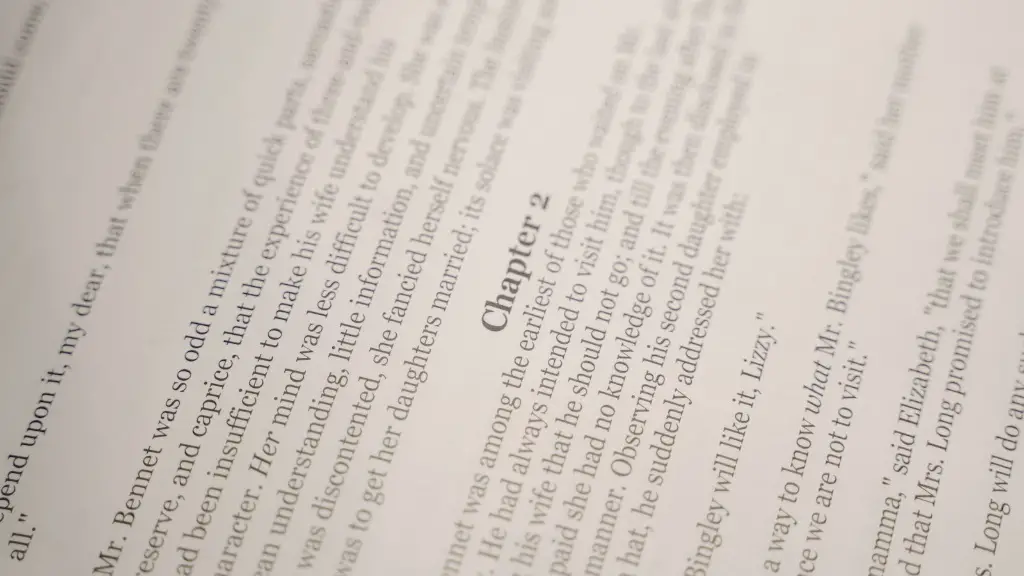Metaphysical poetry, a poetic form dating back to the 17th century, is characterized by a combination of philosophical and imaginative qualities. This type of poetry often combines both witty, often paradoxical, language and complex ideas and whether the subject is a low one or a sublime one, the poet’s use of rhetoric, the surprise within paradox and conceits, reflects the writer’s attempts to explore the mind and soul, and to elevate the poem to greater heights. But all this comes at the cost of clarity of meaning, as readers can find themselves unable to decipher the poet’s ideas.
One of the most notable characteristics of metaphysical poetry is its focus on wit and intelligence, as evidenced by the use of elaborate metaphors and other figures of speech. These metaphors may be extended as arguments, often visual, and as a result, they provide a way of expressing complex ideas by discovering new connotations. This helps the reader to understand the poem’s message in a more meaningful manner.
Metaphysical poetry is also known for its cleverness and playfulness. Its use of puns, irony, and paradox continues to surprise the reader and encourages the reader to think in new and innovative ways. As well, the writeroften paints vivid images for the reader, which further contribute to the literary appeal of the works.
Apart from its focus on wit and intelligence, metaphysical poetry is also characterized by its use of precise language and precise imagery. This can be clearly seen in poems such as Andrew Marvell’s “To His Coy Mistress”, which makes precise use of words to paint a vivid image, while also conveying the writer’s feelings and ideas. Another example of precise language is the poem “The Canonization” by John Donne, which uses a variety of both mental and physical images to convey complex emotions.
Metaphysical poetry is also characterized by its religious or spiritual themes. For instance, in Marvell’s poem “The Garden”, the poet uses the metaphor of a garden to express the idea that both romantic and spiritual fulfillment may be achieved through contemplation and imagination. Similarly, metaphysical poets like John Donne and George Herbert use the spiritual imagery in their poems to express a variety of different spiritual themes.
All in all, one of the most common characteristics of metaphysical poetry is its focus on wit and intelligence. Its use of wit, puns, irony, and paradox creates an element of surprise and encourages the reader to think in new and innovative ways. As well, its use of precise language and precise imagery helps the reader to understand the poem’s message more clearly. Finally, metaphysical poetry is also characterized by its religious or spiritual themes, which help the reader to better understand the poet’s feelings and ideas.
Innovative Metaphors
Metaphysical poetry is well known for its innovative use of metaphors. Often, they are used to extend an argument, making visual sense of a complex idea, which helps the reader to understand the poem’s message in a more meaningful manner. Metaphors are often used to explore the mind and soul and to elevate the poem to greater heights, allowing the poet to express complex ideas through surprise and wit. Metaphors can often be found in the spiritual imagery of metaphysical poets like John Donne and George Herbert, as they use various religious images to explore the human condition.
Metaphors are also frequently used in metaphysical poetry to extend an argument, to create the visual sense of a complex idea. This helps the reader to better understand the poet’s feelings and ideas. Moreover, metaphors can be used to explore the mind and soul, allowing the poet to elevate the poem to greater heights by using surprise and wit. As a result, metaphors are a common characteristic of metaphysical poetry.
Use of Rhetoric and Paradox
Metaphysical poetry is also characterized by its use of rhetoric and paradox. The poet uses rhetoric to create surprise and interest in the poem, and paradox in order to create an element of surprise and to encourage the reader to think in new and innovative ways. Additionally, the poet also uses paradox to explore the human condition and to express complex ideas. For instance, in John Donne’s “The Canonization”, the poet uses the paradox of love and death to explore the idea of transcendence.
Rhetoric and paradox are also often used to explore the mind and soul, allowing the poet to elevate the poem to greater heights by discovering new connotations of words. This can be seen in Andrew Marvell’s “To His Coy Mistress”, in which the poet uses extended metaphors and irony to express complex ideas. Overall, the use of rhetoric and paradox is a common characteristic of metaphysical poetry.
Focus on Intelligence and Joviality
Metaphysical poetry is well known for its focus on intelligence and its use of wit, puns, and other figures of speech. These jocular elements help to create the visual appeal of the poem and to surprise the reader by presenting unexpected turns of phrase. Furthermore, they are also used to express complex ideas and emotions, as well as to explore the human condition. For instance, John Donne’s infamous poem “The Flea” uses a variety of witty metaphors and puns to explore the idea of temptation and desire.
Overall, the focus on intelligence and joviality is a common characteristic of metaphysical poetry. It is often seen in the use of witty metaphors and puns, as well as in the use of irony and paradox. Furthermore, these elements help to create the visual appeal of the poem and to surprise the reader. As a result, the focus on intelligence and joviality is a common characteristic of metaphysical poetry.
Use of Eloquent Language
Metaphysical poetry is also known for its use of eloquent and precise language. This can be seen in a variety of John Donne’s poems, such as “The Canonization”, in which the poet uses a variety of both mental and physical images to convey complex emotions. As well, in Andrew Marvell’s “To His Coy Mistress”, the poet makes precise use of words to paint a vivid image, while also conveying the writer’s feelings and ideas. This use of precise language helps to create the visual appeal of the poem, as well as to express the poet’s ideas.
In addition to its use of precise language, metaphysical poetry is also known for its use of powerful imagery. For example, in various poems by metaphysical poets such as John Donne and Andrew Marvell, they use physical and mental imagery to explore the human condition and to express complex emotions. This helps to create the visual and emotional appeal of the poem, as well as to communicate the poet’s feelings and ideas.
Overall, the use of eloquent language and powerful imagery is a characteristic of metaphysical poetry. Its use of precise language and precise imagery helps the reader to understand the poem’s message more clearly, while its use of powerful imagery helps to create the visual and emotional appeal of the poem. As a result, the use of eloquent language and powerful imagery is a characteristic of metaphysical poetry.
Exploration of the Human Condition
Metaphysical poetry is also characterized by its exploration of the human condition. This is often done through the use of religious symbols and metaphors, as well as through the use of wit and irony. For instance, in John Donne’s “The Flea”, the poet uses religious symbolism to explore the idea of temptation and desire, while also using wit and irony to create the visual appeal of the poem. Similarly, in Andrew Marvell’s “The Garden”, the poet uses the metaphor of a garden to explore the idea of spiritual and romantic fulfillment.
Exploring the human condition is also seen in the spiritual imagery of metaphysical poets like John Donne and George Herbert, as they often use religious symbols and metaphors to express a variety of different spiritual themes. This helps the reader to better understand the poet’s feelings and ideas. Furthermore, it also allows the poet to explore the mind and soul, thus elevating the poem to greater heights.
Overall, exploration of the human condition is a common characteristic of metaphysical poetry. Its use of religious symbols and metaphors, as well as its focus on wit and irony, helps the reader to better understand the poet’s feelings and ideas. As a result, exploration of the human condition is a characteristic of metaphysical poetry.




